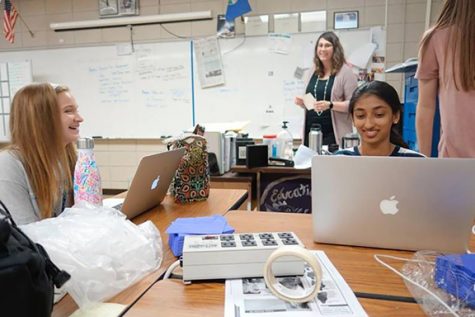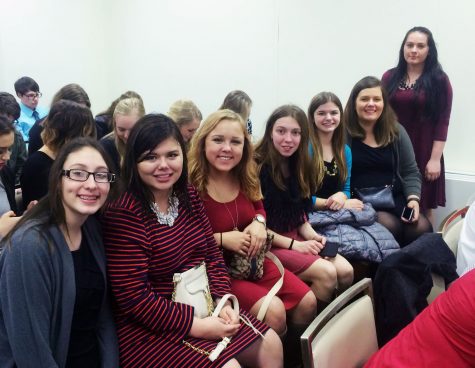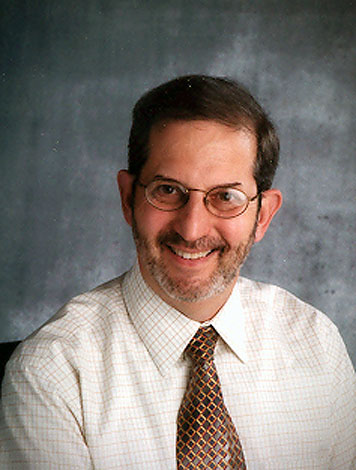The Social Journalist
The world has becoming increasingly social, is your media program ready for it?
Twitter.
Instagram.
Facebook.
Snapchat.
The big four.
For many advisers, not just the new ones, social media can be one of the scariest parts of the job. I mean, seriously, you are giving students nearly complete control over content when social media platforms get introduced into a media program. However, if you plan correctly and set parameters, training social journalists truly won’t be that hard.
So… new or experienced, here are some quick tips and tricks to get you going with social success:
- Plan Social Media Mission and Policies: What do you want and why do you want it? This should include your opportunities to cover your legal and ethical concerns, as well as provide a chance to elaborate on the three Cs: cause, crafting, and caring. At the end of this blog post is my staff’s social media statement, which you can use to craft, develop, and change to suit your staff. Here’s what you need to consider:
- Cause: Your audience should consider why you are worth following—your practical wisdom. This should be your “plan of attack.” The purpose of the “craft” language is not to define what you are using, but what you are trying to accomplish.
- Crafting: Your audience should consider why you are worth following—your practical wisdom. This should be your “plan of attack.” The purpose of the “craft” language is not to define what you are using, but what you are trying to accomplish: create, engage, promote, and share.
- Caring: Putting the best interest of your audience first. How are we putting our audience first?: Emphasis on tradition; Change and growth; Location (efficiency); Timeliness (immediacy); Comfort; Opportunities; Community; and Pride
- Start small. You can do this in a number of ways: one platform, one campaign, one mission. Here’s a quick and simple example: #tbt. Get your staff to reach out to teachers to see if they would be willing to share their high school photos with your staff. Every Thursday post one of these photos on a media Instagram with #tbt. Once you’ve mastered constant posting on Instagram, add a new campaign or a new platform and go.
- People like sports so start sports-only accounts.
- Live-Tweet events. If someone isn’t at the event, they’ll be really appreciative of you providing information and providing it consistently. This may include pep rallies, assemblies, speakers, big games and more.
- Follow accounts of schools known for their social. Go to jeadigitalmedia.org and there is a list of schools’ social accounts. Follow them and learn from them, aka creatively steal their ideas because it’s totally okay to do that.
- Don’t be afraid because fear is only going to hold you back; however, make sure that you do talk through your social strategy with your administrators before moving ahead. They’ll probably want to know your goals, and it doesn’t hurt to talk it through with them first… at least just as an opportunity to defend your stance.
- Go grassroots with your promotions because paper still trumps digital sometimes. If you want to get people to follow you, then you need to get them to see you. Use posters, crafts, announcements and more to get your name and your social accounts names out there.
- Be innovative because innovation inspires change. Try mixing journalistic content and promotional material because that is what the social journalist does.
***
Sequoit Media attempts to provide the community of Antioch Community High School with the most accurate and up-to-date news, lifestyles and sports coverage through the use of a variety of social media channels. We view social media as an opportunity to provide ACHS students with the most efficient news possible, as soon as possible, while keeping in mind our school’s core values of being respectful, responsible and proud in our content creation, curation and promotion. We believe our program’s strong tradition of journalistic content creation combined with our innovative approach to promotion and engagement allow the ACHS community to consume content whenever and wherever they are most comfortable, while also allowing for increased opportunities to share their reading experiences. We believe the use of social media creates a journalistic community that makes our school even more proud to be Sequoits.
***
Patrick Johnson, CJE, is the news magazine adviser at Antioch Community High School in Illinois. He is a member of the KEMPA board and director of the KEMPA Summer Journalism Workshop and co-director of the organization’s annual fall journalism conference. His blog focuses on issues affecting new journalism advisers.





